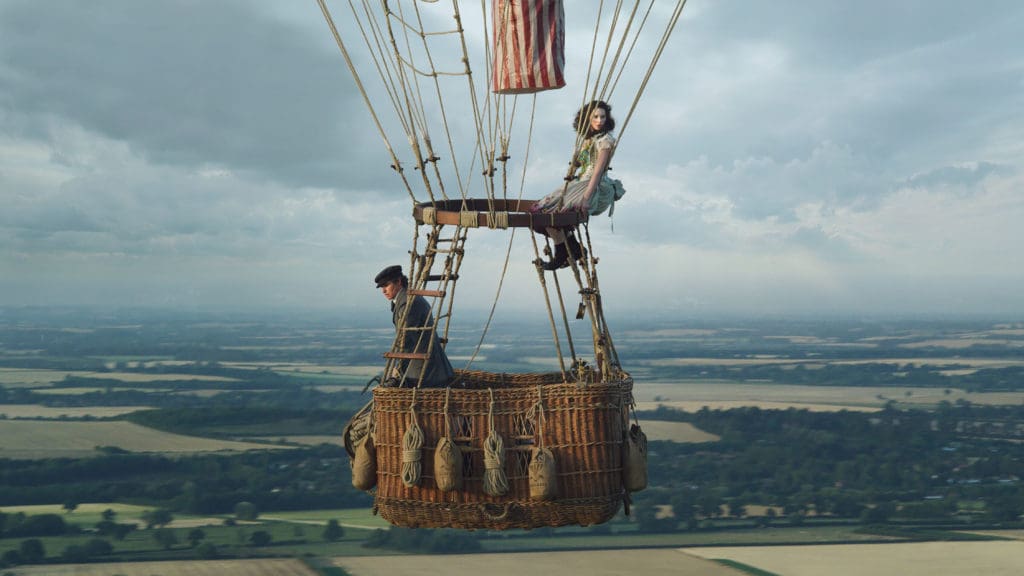
Written by George Heftler
There are a myriad of issues with Victorian era disaster film, The Aeronauts. Based on a biography of several aeronauts (although there were, as usual, severe liberties taken; to point, one of the two main characters does not actually exist), this film tells the story of Amelia Wren and James Glaisher taking to the sky in a gas balloon in search of discoveries leading to the advent of meteorology.
Chief among the flaws is the characterization of both James (Eddie Redmayne) and Amelia (Felicity Jones). There is absolutely no substance to either of them, just a burning desire to keep the movie…well, moving. They both operate entirely as a series of trite clichés. James is a downtrodden but brilliant scientist who nobody understands. Amelia is a woman who was once a daredevil, reduced by the death of her husband to a depressed husk who just can’t seem to make up her mind. Both experience boring and predictable arcs related to these aspects of their characters.
Perhaps with some better performances, these characters could have been salvaged. I doubt it, however, and regardless, that’s not what we get. Instead, we are subjected to Eddie Redmayne (who, if you told me was entirely comprised of CGI, I’d believe it) and Felicity Jones, reunited after The Theory of Everything. It certainly doesn’t feel like they’ve worked together before though: their chemistry is that of complete strangers as they goofily smirk at each other from across the basket and discover that perhaps, just perhaps, we aren’t so different after all, you and I. They may be studying the weather, but it feels more like astronomy with the black hole of charisma at the bottom of the balloon.
The plot itself also exists as a clichéd, hackneyed vehicle for vistas, alternating between Amelia and James on their expedition and a variety of flashbacks that range from “pretty bad” to “why is this awful scene in here, it completely slammed on the brakes”. Despite the clichés, I did find myself enjoying the scenes in the balloon, buoyed along by the actual disaster scenes. Visceral and intense, you feel the madness of the journey as they cross storms, endure freezing temperatures, and fight against the cruelest mistress of all, gravity.
Beyond the disaster scenes, another success is found in the look of the movie. I’m not one of those people who is like, “wow that girdle wasn’t around until 1864 and this takes place in 1862,” so I can’t speak to the authenticity of the costuming. It all looked appropriate enough to me, but really, our eyes are in the skies. The whole movie we’re monologue’d at about the beauty of the sky and the stars, and I think they did a great job of capturing that. The colors are bright. There’s plenty of wide shots to soak it in and some interesting camera work keeps things from getting boring while we admire the environments they’re passing through. This is absolutely where the movie shines.
So, would I recommend this movie? It’s not particularly long at 100 minutes, so even if you don’t enjoy it, you’re not out that much of your time. But I can’t help wondering if people looking for a disaster movie are also looking for period pieces, or if people looking for period dramas are also looking for disaster movies. If you bristled at that, thinking, “hey I like both of those things”, then sure, this movie may be worth seeing. In theaters, though. This is definitely a movie where the big screen helps. If you’re less intrigued by that genre crossover, then I think you’re safe to say aero-nah to The Aeronauts.

